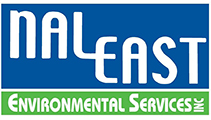Water Sampling for New York State Primary and Secondary Standards
Sampling for Classical Chemistry Constituents and Nutrients Requiring Acid Preservation as Listed (IOCs)
All sampling should include a minimum of two (2) samples. The first sample should be first draw (initial, immediate flow) and the second sample should be a flush draw sample (allowed to run for a short time).
Sampling for Metals (IOCs) (23)
Antimony, Arsenic, Barium, Beryllium, Cadmium, Calcium, Chromium V, Magnesium, Manganese, Mercury, Nickel, Selenium, Sodium, Silver, Thallium, Lead, Copper, Zinc, and others
Sampling for Volatile Organic Compounds (VOCs)
Benzene, Carbon Tetrachloride, o-Dichlorobenzene, p-Dichlorobenzene, 1,2-Dichloroethane, 1,1-Dichloroethylene, cis-1,2-Dichloroethylene, trans-1,2-Dichloroethylene, Dichloromethane, 1,2-Dichloropropane, Ethylbenzene, Monochlorobenzene, Styrene, Tetrachloroethylene, Toluene, 1,2,4-Trichlorobenzene, 1,1,1-Trichloroethane, 1,1,2- Trichloroethane, Trichloroethylene, Vinyl Chloride, Xylenes(total)
Sampling for Total Dissolved Solids (TDS)
Measure the solids remaining in a water sample filtered through a 1.2 µm filter. According to the World Health Organization (WHO, 1996), the compounds and elements remaining after filtration are commonly calcium, magnesium, sodium, potassium, carbonate, bicarbonate, chloride, sulfate, silica and nitrate-n. High TDS affects the taste and odor of water and in general, levels above 300 mg/L become noticeable to consumers.
Sampling for Total Suspended Solids (TSS), also known as non-filterable residue, are those solids (minerals and organic material) that remain trapped on a 1.2 µm filter (U.S.EPA, 1998). Suspended solids can enter groundwater through runoff from industrial, urban or agricultural areas.
Elevated TSS (MMSD, 2002) can “. . . reduce water clarity, degrade habitats, clog fish gills, decrease photosynthetic activity and cause an increase in water temperatures.”
Bacteria in Water Total Coliforms, Fecal Coliforms, and E. Coli
The most basic test for bacterial contamination of a water supply is the test for total coliform bacteria. Total coliform counts give a general indication of the sanitary condition of a water supply.
- Total coliforms include bacteria that are found in the soil, in water that has been influenced by surface water, and in human or animal waste.
- Fecal coliforms are the group of the total coliforms that are considered to be present specifically in the gut and feces of warm-blooded animals. Because the origins of fecal coliforms are more specific than the origins of the more general total coliform group of bacteria, fecal coliforms are considered a more accurate indication of animal or human waste than the total coliforms.
- Escherichia coli (E. coli) is the major species in the fecal coliform group. Of the five general groups of bacteria that comprise the total coliforms, only E. coli is generally not found growing and reproducing in the environment. Consequently, E. coli is considered to be the species of coliform bacteria that is the best indicator of fecal pollution and the possible presence of pathogens.
Enterococci sp. took the place of fecal coliforms as the new USA federal standard for water quality at public saltwater beaches and E. coli at freshwater beaches.[17] It is believed to provide a higher correlation than fecal coliform with many of the human pathogens often found in city sewage.
Pesticides in Water
One of the most common methods for measuring odor in water is the threshold odor test. (not usually in drinking water)
Many harmful contaminants in water cannot be detected due to taste or smell and many of the contaminants found in drinking water that have a detectable taste or odor are not harmful. Sources of taste and odor problems can be found in surface water and groundwater.
NAL East currently follows the guidelines set forth by the United States Environmental Protection Agency (USEPA), the Delaware Department of Environmental Protection (DEDEP), the Maryland Department of Health (MDDOH), the New Jersey Department of Health (NJDEP), the New York City Department of Health (NYCDOH), the Pennsylvania Department of Environmental Protection (PADEP), the National Institute for Occupational Safety and Health (NIOSH) and the Occupational Safety and Health Administration (OSHA).
